Driving Forces of Natural Gas Flow and Gas–Water Distribution Patterns in Tight Gas Reservoirs: A Case Study of NX Gas Field in the Offshore Xihu Depression, East China
Abstract
:1. Introduction
2. Geological Setting
3. Methods, Simulation Parameters, including 3D Modeling Boundary Conditions
3.1. Identification of Critical Conditions for Buoyancy-Overpressure Driving
3.1.1. Critical Gas Column Height Analysis Based on Experiment Data
3.1.2. Critical Pore-Throat Radius Method
3.1.3. Gas–Water Distribution Attitude Method
3.2. Simulation of Overpressure and Fluid Charging Process Driven by Overpressure
3.2.1. Identification of Causes of Ancient and Modern Overpressure
3.2.2. Determination of Main Simulation Parameters
3.2.3. Selection of Hydrocarbon Generation Kinetic Model
3.2.4. Selection of 3D Model
4. Results and Discussion
4.1. Closure Height and Maximum Gas Column Height of NX Gas Field Trap
4.2. Main Driving Forces of Gas Flow/Migration
4.2.1. Critical Conditions for and Strength of Buoyancy Action
4.2.2. Gas–Water Distribution Pattern in Current Gas Reservoir
4.2.3. Main Driving Forces of Natural Gas Flow and Gas–Water Distribution Patterns
- (1)
- H3b conventional low permeability gas reservoir with edge water driven by overpressure and buoyancy:
- (2)
- Distribution pattern of gas and water in the same layer in H3a, H4b and H5a driven by overpressure:
4.3. Simulation of the Formation and Evolution of the Dynamic Field and Gas–Water Distribution Characteristics Driven by It
4.3.1. Formation and Evolution Process of Overpressure
4.3.2. Distribution of Favorable Natural Gas Accumulation Zones Driven by Overpressure
4.4. Geological Significance of Exploration and Development
5. Conclusions
- (1)
- In this paper, the critical conditions of buoyancy-overpressure drive and identification methods for main driving forces in low permeability-tight sandstone gas reservoirs, including critical gas column height method, critical pore throat radius method, gas–water distribution attitude method and geological comprehensive analysis method, are summarized systematically.
- (2)
- The four major gas-bearing layers in the NX tight sandstone gas reservoir have obvious differences in gas flow/migration dynamics. The natural gas in H3b gas reservoir was driven by both buoyancy and overpressure during accumulation and by buoyancy after accumulation. In H3a, H4b and H5a gas layers, buoyancy is not enough to overcome the capillary force to make the gas migrate during and after gas accumulation and reservoir formation, and the driving force of gas flow is the overpressure caused by fluid volume expansion due to source rock hydrocarbon generation.
- (3)
- Gas–water distribution patterns formed by the two driving forces have been proposed. In the H3b conventional low permeability gas reservoir, the gas-edge water distribution pattern is driven by overpressure and buoyancy, and the anticlinal trap controls distribution area of the gas reservoir. In H3a, H4b and H5a reservoirs, gas and water are in the same layer driven by overpressure. As buoyancy is not the driving force of gas flow, gas and water exist in the same reservoir and are produced together. These reservoirs have no edge and bottom water, an anticline trap not controlling the gas and water distribution, and gas source faults controlling the boundary of gas reservoir.
- (4)
- The understandings from this study not only significantly expand the gas-bearing area of H3a, H4b and H5a gas reservoirs delineated in the buoyancy driving pattern but also provide an important geological basis for the formulation of efficient development plans for NX tight sandstone gas fields by class and grade.
Author Contributions
Funding
Data Availability Statement
Conflicts of Interest
References
- Jia, A.; Cheng, G.; Chen, W.; LI, Y. Forecast of natural gas supply and demand in China under the background of “Dual Carbon Targets”. Pet. Explor. Dev. 2023, 50, 431–440. [Google Scholar] [CrossRef]
- Law, B.E.; Spencer, C.W.; Longman, M.W.; Kneller, S.R.; Meyer, T.S.; Chapin, M.A. The Pinedale gas field: A sweet spot in a regionally pervasive basin-centered gas accumulation, Green River and Hoback Basins, Wyoming. In Pinedale Field: Case Study of a Giant Tight Gas Sandstone Reservoir; AAPG Memoir: Houston, TX, USA, 2014; Volume 107, pp. 37–59. [Google Scholar]
- Wang, R.; Liu, K.; Shi, W.; Qin, S.; Zhang, W.; Qi, R.; Xu, L. Reservoir Densification, Pressure Evolution, and Natural Gas Accumulation in the Upper Paleozoic Tight Sandstones in the North Ordos Basin, China. Energies 2022, 15, 1990. [Google Scholar] [CrossRef]
- Wu, W.; Zhao, J.; Wei, X.; Wang, Y.; Zhang, J.; Wu, H.; Li, J. Evaluation of gas-rich “sweet-spot” and controlling factors of gas–water distribution in tight sandstone gas provinces: An example from the Permian He8 Member in Sulige Gas Province, central Ordos Basin, Northern China. J. Asian Earth Sci. 2022, 227, 105098. [Google Scholar] [CrossRef]
- Nelson, P.H.; Longman, M.W.; Kneller, S.R.; Meyer, T.S.; Chapin, M.A. Fluid production characteristics in Pinedale and Jonah Fields. In Pinedale Field: Case Study of a Giant Tight Gas Sandstone Reservoir; AAPG Memoir: Houston, TX, USA, 2014; Volume 107, pp. 533–547. [Google Scholar]
- Shanley, K.W.; Cluff, R.M.; Robinson, J.W. Factors controlling prolific gas production from low-permeability sandstone reservoirs: Implications for resource assessment, prospect development, and risk analysis. AAPG Bull. 2004, 88, 1083–1121. [Google Scholar] [CrossRef]
- Zhao, J.; Li, J.; Cao, Q.; Bai, Y.; Wu, W.; Ma, Y. Quasi-continuous hydrocarbon accumulation: An alternative model for the formation of large tight oil and gas accumulations. J. Pet. Sci. Eng. 2019, 174, 25–39. [Google Scholar] [CrossRef]
- Wang, J.; Zhang, C.; Li, J.; Li, Y.; Li, X.; Liu, P.; Lu, J. Tight sandstone gas reservoirs in the Sulige Gas Field: Development understandings and stable-production proposals. Nat. Gas Ind. 2021, 41, 100–110. [Google Scholar]
- Masters, J.A. Deep Basin gas trap, western Canada. AAPG Bull. 1979, 63, 152–181. [Google Scholar]
- Rose, P.R.; Everett, J.R. Possible basin centered gas accumulation, Roton Basin, Southern Clorado. Oil Gas J. 1984, 82, 190–197. [Google Scholar]
- Law, B.E. Basin-Centered Gas Systems. AAPG Bull. 2002, 86, 1891–1919. [Google Scholar]
- Schmoker, J.W. Resource-Assessment Perspectives for Unconventional Gas Systems. AAPG Bull. 2002, 86, 1993–1999. [Google Scholar]
- Schmoker, J.W. Method for assessing continuous-type (unconventional) hydrocarbon accumulations. In National Assessment of United States Oil and Gas Resources—Results, Methodology, and Supporting Data; Gautier, D.L., Dolton, G.L., Takahashi, K.I., Varnes, K.L., Eds.; U.S. Geologic Survey Digital Data Series DDS-30 (CD-ROM); U.S. Geological Survey: Reston, VA, USA, 1995. [Google Scholar]
- Zhao, J.; Cao, Q.; Bai, Y.; Er, C.; Li, J.; Wu, W.; Shen, W. Petroleum accumulation: From the continuous to discontinuous. Pet. Res. 2017, 2, 131–145. [Google Scholar] [CrossRef]
- Zhao, J.; Fu, J.; Yao, J.; Liu, X.; Wang, H.; Cao, Q.; Wang, X.; Ma, Y.; Fan, Y. Quasi-continuous accumulation model of large tight sandstone gas field in Ordos Basin. Acta Pet. Sin. 2012, 33, 37–52. [Google Scholar]
- Zhao, J.; Li, J.; Cao, Q.; Bai, Y.; Er, C.; Wang, X.; Xiao, H.; Wu, W. Hydrocarbon accumulation patterns of large tight oil and gas fields. Oil Gas Geol. 2013, 34, 573–583. [Google Scholar]
- Hou, Z.; Zhang, S.; Li, J.; Zhao, J.; Liu, Y.; Tian, L.; Zhong, X.; Chen, M.; Xu, Z. Genetic mechanism of overpressures in the west slope of central Xihu sag. Acta Pet. Sin. 2019, 40, 1059–1068+1124. [Google Scholar]
- Liu, J.; Zhang, S. Natural gas migration and accumulation patterns in the central-north Xihu Sag, East China Sea Basin. Nat. Gas Geosci. 2021, 32, 1163–1176. [Google Scholar]
- Zhou, X. Geological understanding and innovation in Xihu sag and breakthroughs in oil and gas exploration. China Offshore Oil Gas 2020, 32, 1–12. [Google Scholar]
- Li, J.; Zhao, J.; Hou, Z.; Zhang, S.; Chen, M. Origins of overpressure in the central Xihu depression of the East China Sea shelf basin. AAPG Bull. 2021, 105, 1627–1659. [Google Scholar] [CrossRef]
- Zou, W.; Yu, Y.; Liu, J.; Jiang, Y.; Tang, X.; Chen, S.; Yu, L. Main controlling factors of the central inversional structure belt and the development of Ningbo anticline in Xihu sag, East Sea Basin. Acta Pet. Sin. 2021, 42, 176–185. [Google Scholar]
- Liu, J.; Zou, W.; Li, N.; Qin, J.; Liu, Y. Hydrocarbon accumulation control mechanism of reservoir-conservation coupling and its large and medium-sized field exploration practice in Xihu sag, East China Sea basin. China Offshore Oil Gas 2019, 31, 11–19. [Google Scholar]
- Shanley, K.W.; Cluff, R.M. The evolution of pore-scale fluid-saturation in low-permeability sandstone reservoirs. AAPG Bull. 2015, 99, 1957–1990. [Google Scholar] [CrossRef]
- Song, X.; Chu, C.; Rui, Z. Structural Framework and Evolution of Xihu Sag in East China Sea Basin. Geol. J. China Univ. 2010, 16, 86–93. [Google Scholar]
- Zheng, Q.; Zhou, Z.; Cai, L.; Lu, Y.; Cao, Q. Meso-Cenozoic tectonic setting and evolution of East China Sea shelf basin. Oil Gas Geol. 2005, 26, 197–201. [Google Scholar]
- Zhou, X.; Jiang, Y.; Tang, X. Tectonic setting, prototype basin evolution and exploration enlightenment of Xihu sag in East China Sea basin. China Offshore Oil Gas 2019, 31, 1–10. [Google Scholar]
- Guo, Z.; Liu, C.; Tian, J. Structural characteristics and main controlling factors of inversion structures in Xihu Depression in Donghai Basin. Earth Sci. Front. 2015, 22, 059–067. [Google Scholar]
- Zhao, J.; Cao, Q.; Bai, Y.; Er, C.; Li, J.; Wu, W.; Shen, W. Petroleum accumulation from continuous to discontinuous: Concept, classification and distribution. Acta Pet. Sin. 2016, 37, 145–159. [Google Scholar]
- Tiab, D.; Donaldson, E.C. Petrophysics: Theory and Practice of Measuring Reservoir Rock and Fluid Transport, 3rd ed.; Gulf Professional Publishing: Houston, TX, USA; Elsevier: Amsterdam, The Netherlands, 2012. [Google Scholar]
- Shi, B.; Wu, W. Geology of Oil and Gas Field; China University of Petroleum Press: Qingdao, China, 2022. [Google Scholar]
- Chen, T.; Jia, A.; He, D.; Ji, L.; Shao, H. Gas and water distribution regularity for tight sandstone reservoirs of Xujiahe Formation in central Sichuan basin. Geol. Sci. Technol. Inf. 2014, 33, 66–71. [Google Scholar]
- Guo, Z.; Li, B.; Zhang, L.; Li, X.; Kong, H. Dissussion on minimum closure for low-amplitude structural nature gas pool: A case study from Sanhu area in the Qaidam basin. Chin. J. Geol. 2008, 43, 34–49. [Google Scholar]
- Leverett, M.C.; Members of AIME. Capillary behavior in porous solids. In Proceedings of the Tulsa Meeting, Houston, TX, USA, October 1940. [Google Scholar]
- Rose, W.; Bruce, W.A. Evaluation of capillary character in petroleum reservoir rocks. Trans. AIME 1949, 186, 127–142. [Google Scholar] [CrossRef]
- Cao, Q.; Zhao, J.; Liu, X.; Hu, A.; Fan, L.; Wang, H. Determination of physical property limits for the gas accumulation in tight sandstone reservoirs in the eastern Ordos Basin. Acta Pet. Sin. 2013, 34, 1040–1048. [Google Scholar]
- Archie, G.E. The electrical resistivity log as an aid in determining some reservoir characteristics. Trans. AIME 1942, 146, 54–62. [Google Scholar] [CrossRef]
- Xu, Z.; Liu, Z.; Zhao, J.; He, Y.; Ma, X.; Li, J.; Zhao, Z. Introducing novel correction methods to calculate sedimentary basin overpressure and its application predicting pressure value and origin. Energies 2023, 16, 5416. [Google Scholar] [CrossRef]
- Zhao, J.; Li, J.; Xu, Z. Advances in the origin of overpressures in sedimentary basins. Acta Pet. Sin. 2017, 38, 973–998. [Google Scholar] [CrossRef]
- Shen, W.; Yu, Z.; Diao, H.; Zhang, T. Simulation of heat flow evolution history in Xihu sag and its significance for hydrocarbon accumulation. China Offshore Oil Gas 2020, 32, 42–53. [Google Scholar]
- Zhang, Y. Thermal history reconstruction of TWT-2 well in Xihu Depression, the East China Sea. Offshore Oil 2009, 29, 44–47. [Google Scholar]
- He, J. Tectono-Thermal History of Xihu Depression, East China Sea. Ph.D. Thesis, TongJi University, Shanghai, China, 2004. [Google Scholar]
- Cao, Q.; Ye, J.; Wang, W. Methods and progress of thickness restoration of strata denudation in sedimentary basins. China Pet. Explor. 2007, 12, 41–46. [Google Scholar]
- Tissot, B.P.; Pelet, R.; Ungerer, P. Thermal history of sedimentary basins, maturation indices, and kinetics of oil and gas generation. AAPG Bull. 1987, 71, 1445–1466. [Google Scholar]
- Espitalié, J.; Ungerer, P.; Irwin, I.; Marquis, F. Primary cracking of kerogens. Experimenting and modelling C1, C2–C5, C6–C15 and C15+ classes of hydrocarbons formed. Org. Geochem. 1988, 13, 893–899. [Google Scholar] [CrossRef]
- Ungerer, P.; Burrus, J.; Doligez, B.; Chenet, P.Y.; Bessis, F. Basin evaluation by integrated two-dimensional modeling of heat transfer, fluid flow, hydrocarbon generation, and migration. AAPG Bull. 1990, 74, 309–335. [Google Scholar]
- Li, J.; Zhao, J.; Fan, Y.; Cao, Q.; Wang, Q.; Hu, W. Gas migration mechanism of quasi-continuous accumulation in the Upper Paleozoic of Ordos Basin. Oil Gas Geol. 2013, 34, 592–600. [Google Scholar]

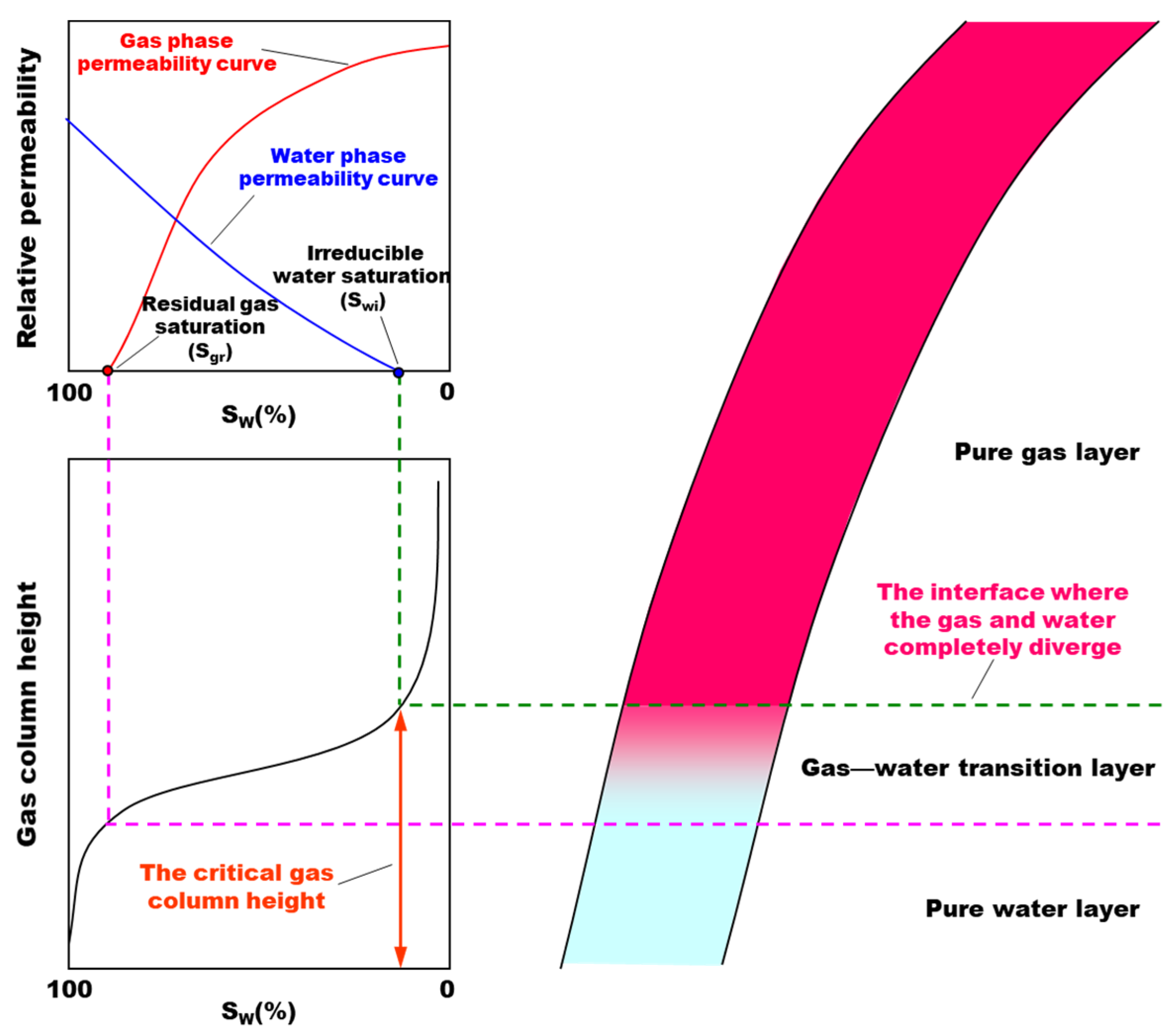
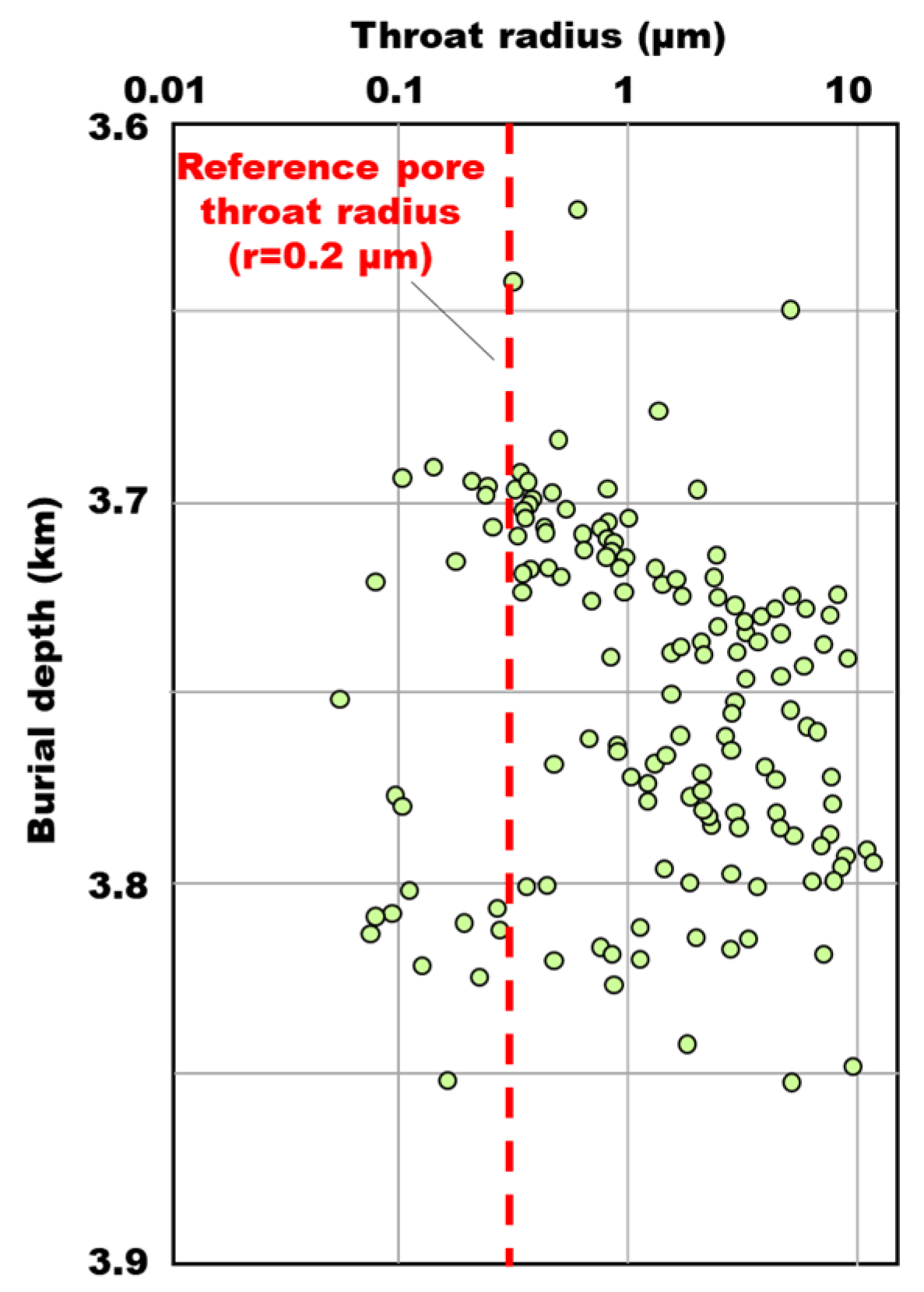

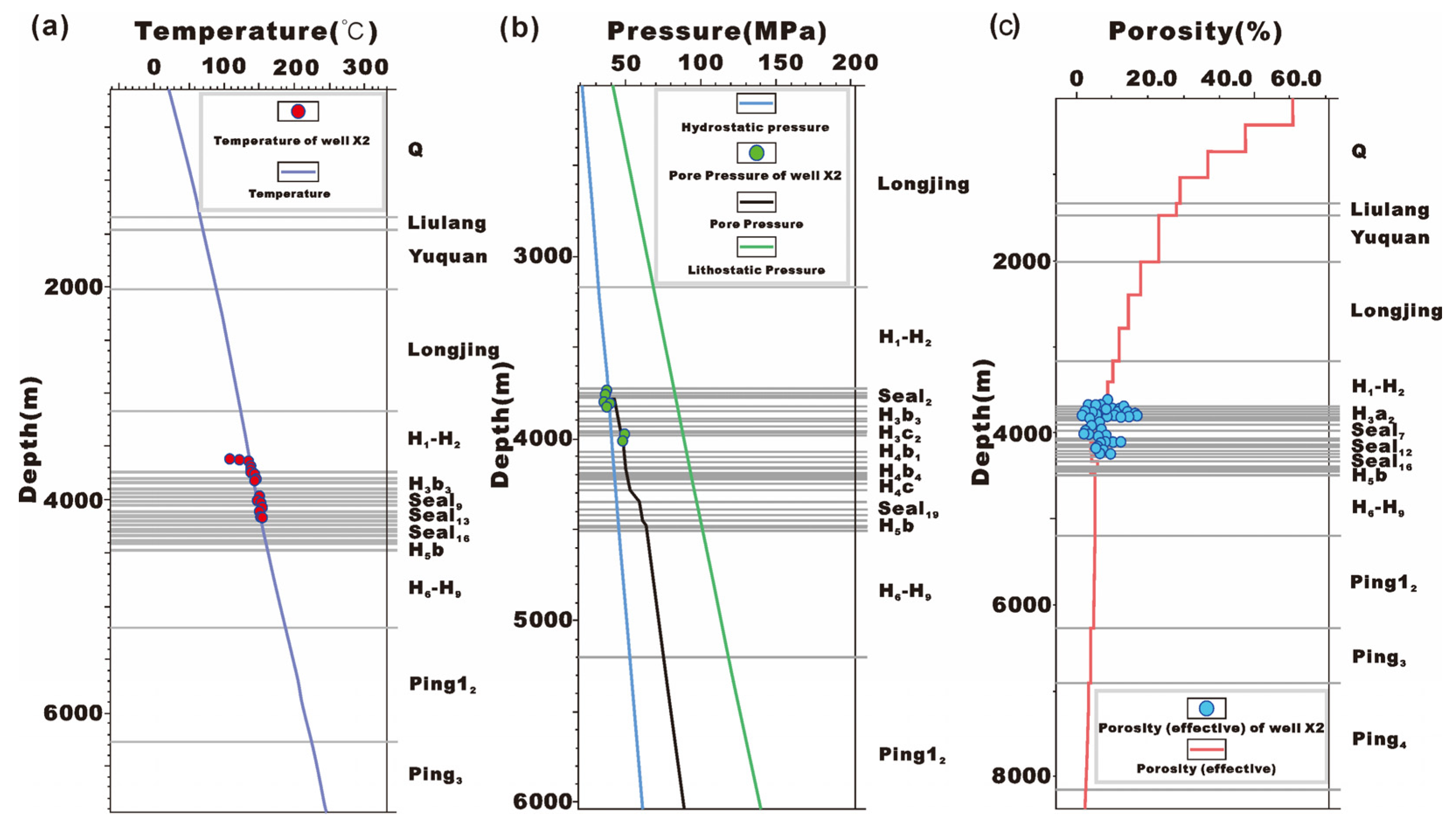
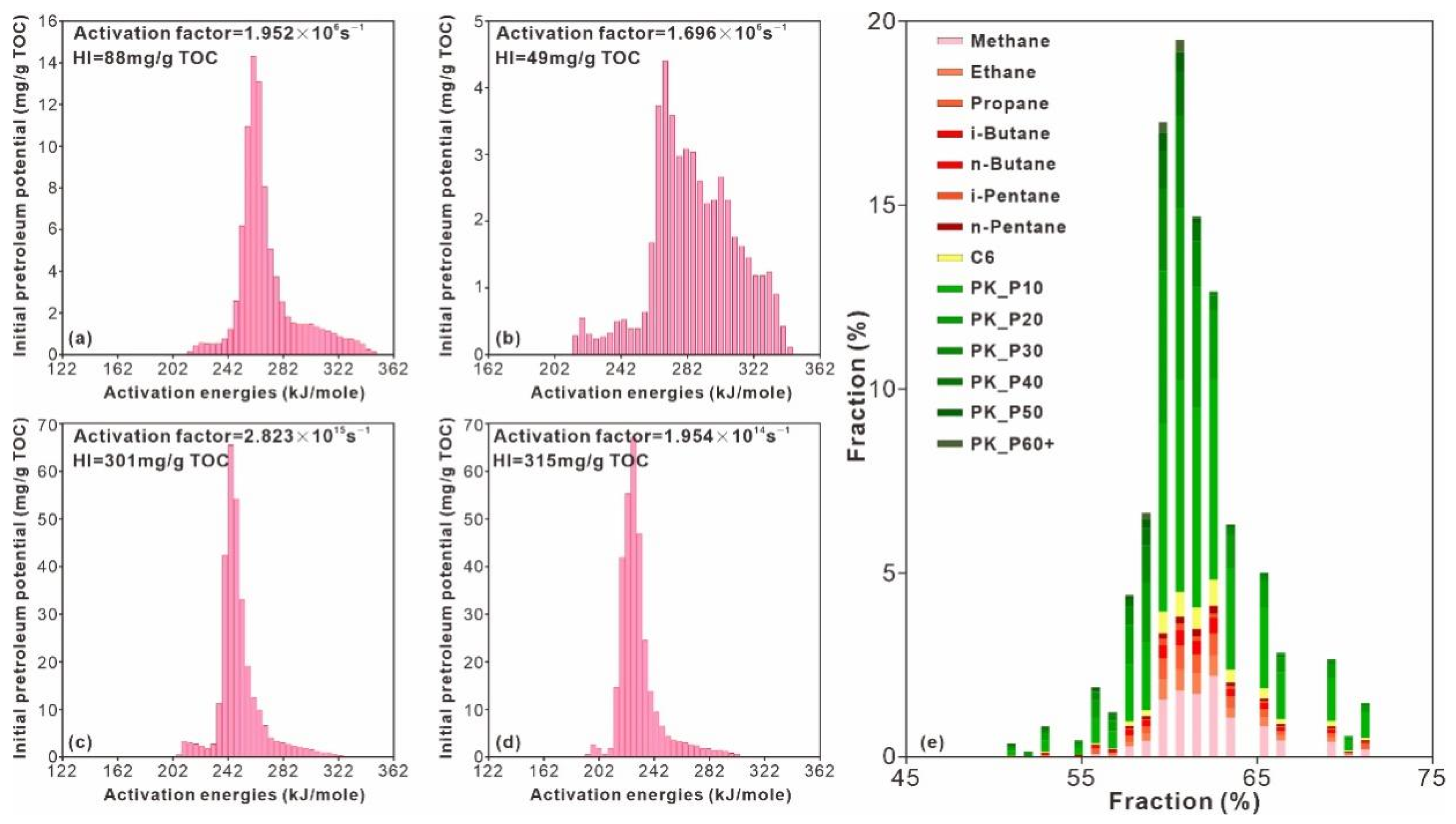
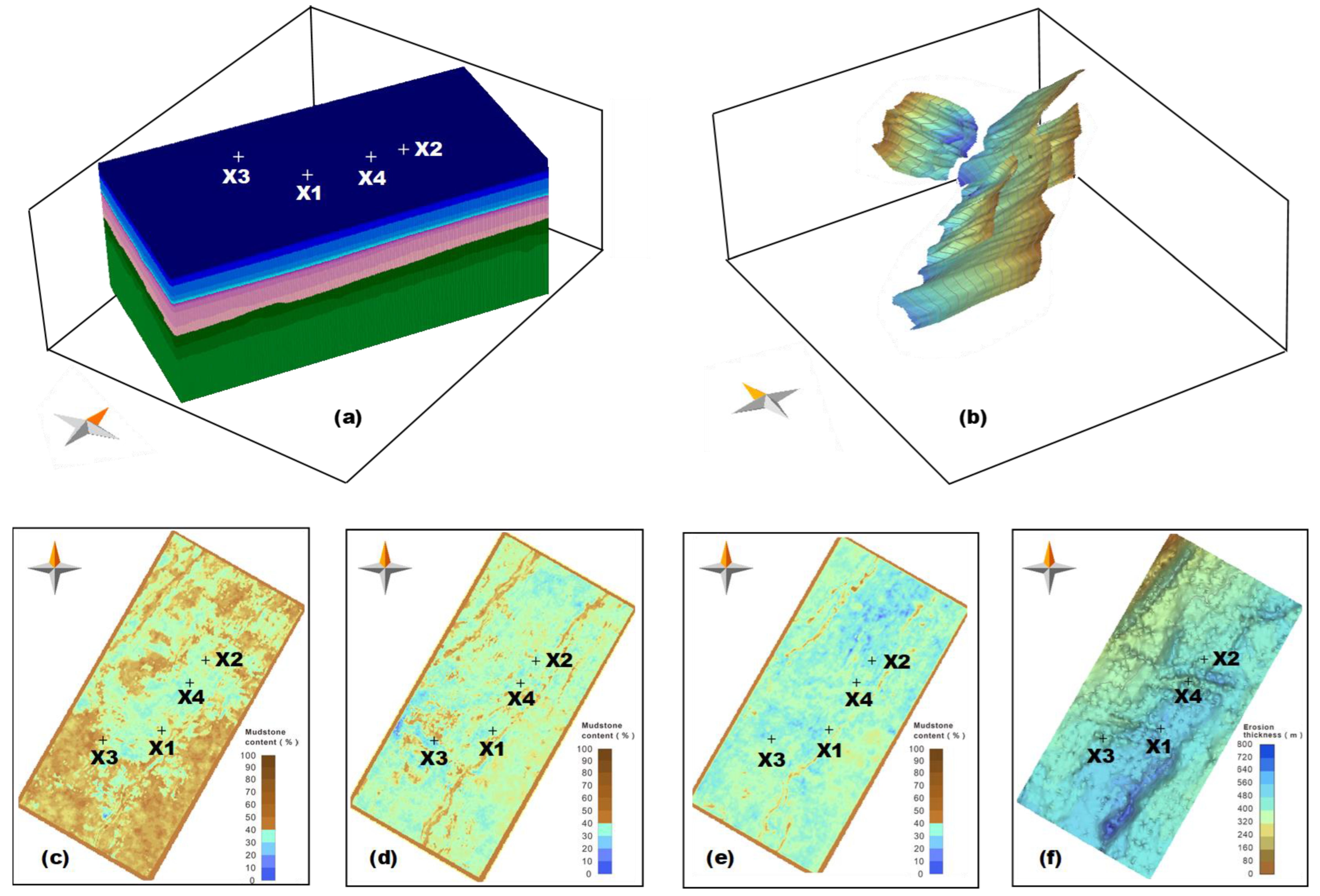
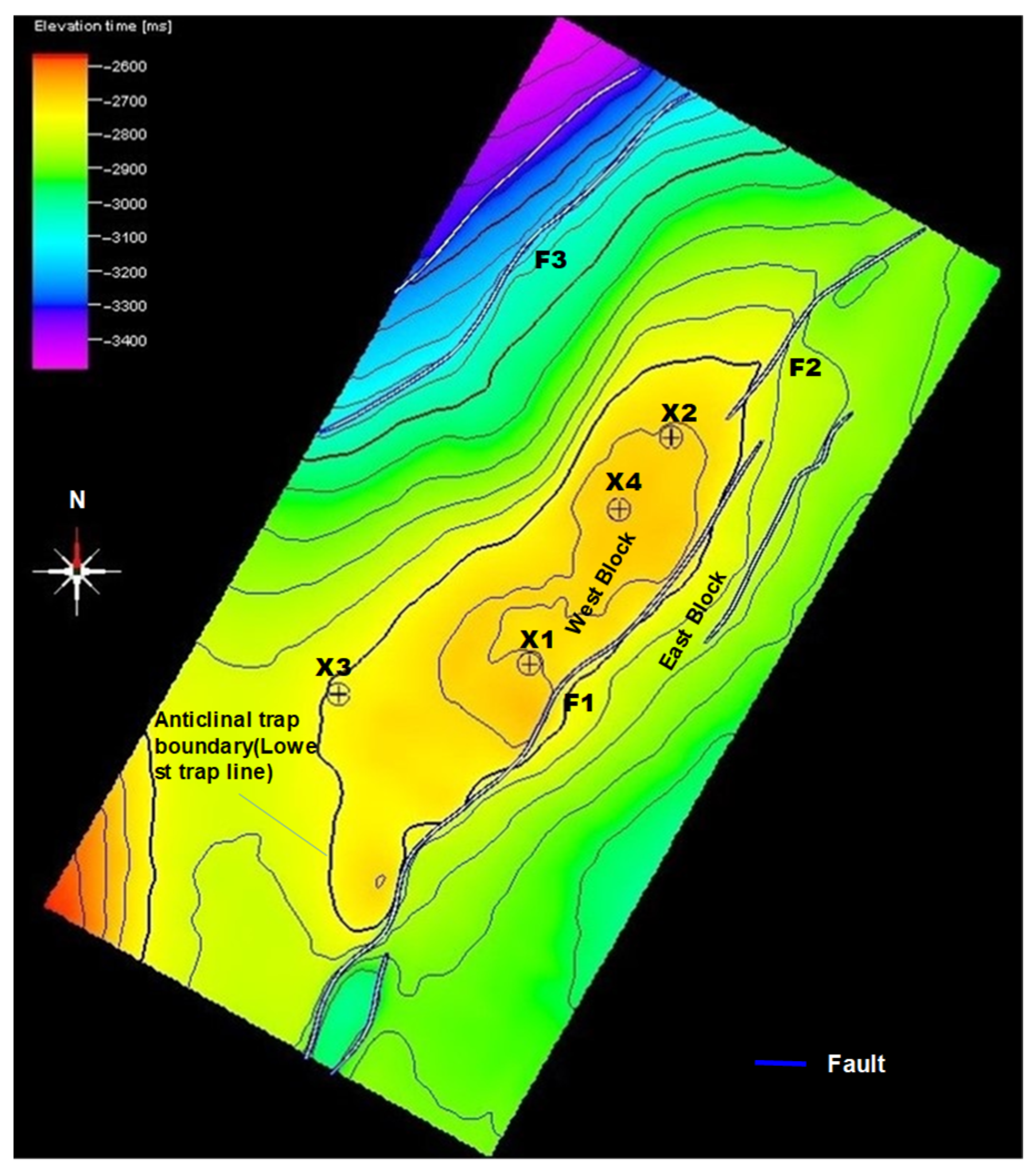


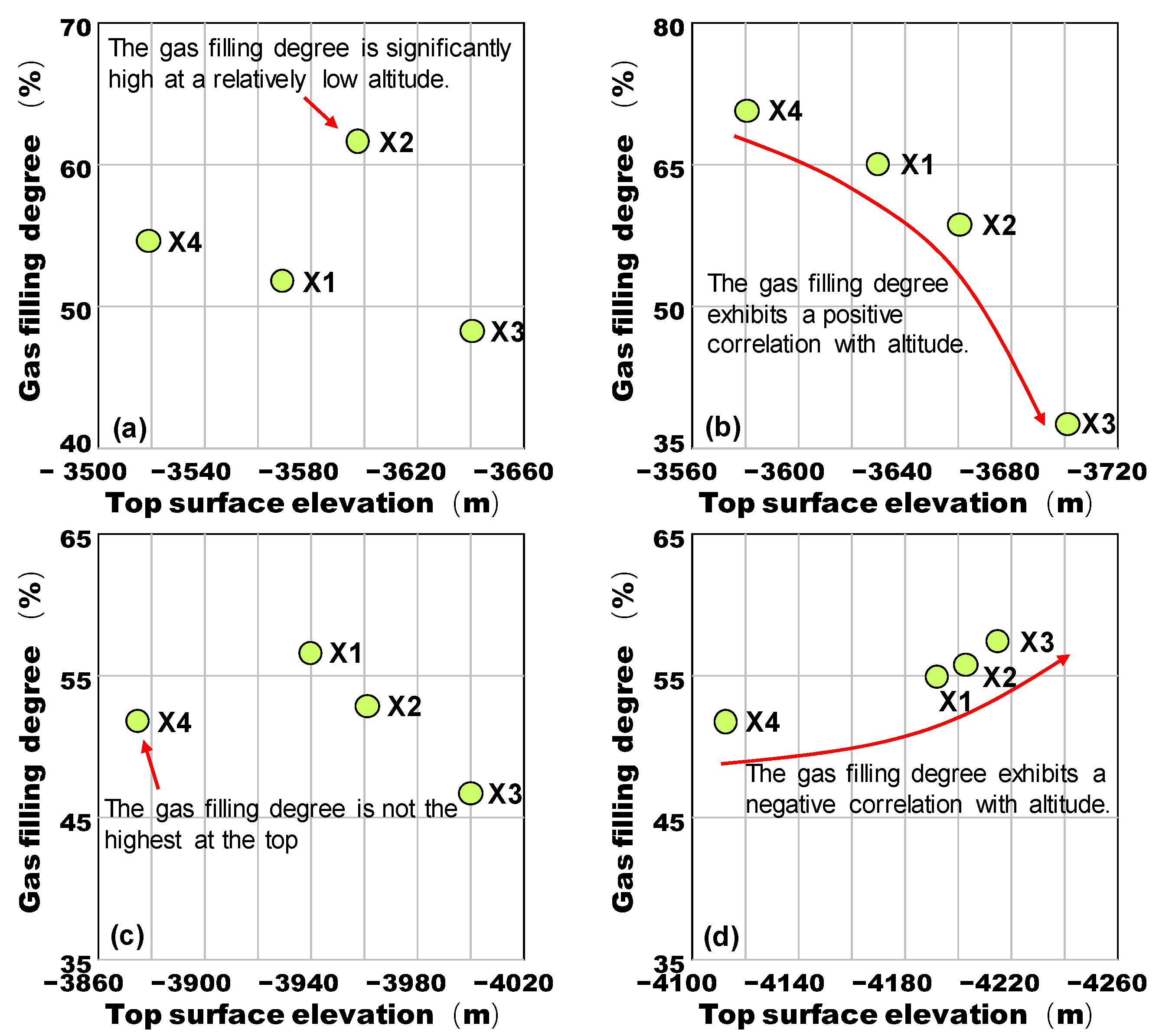
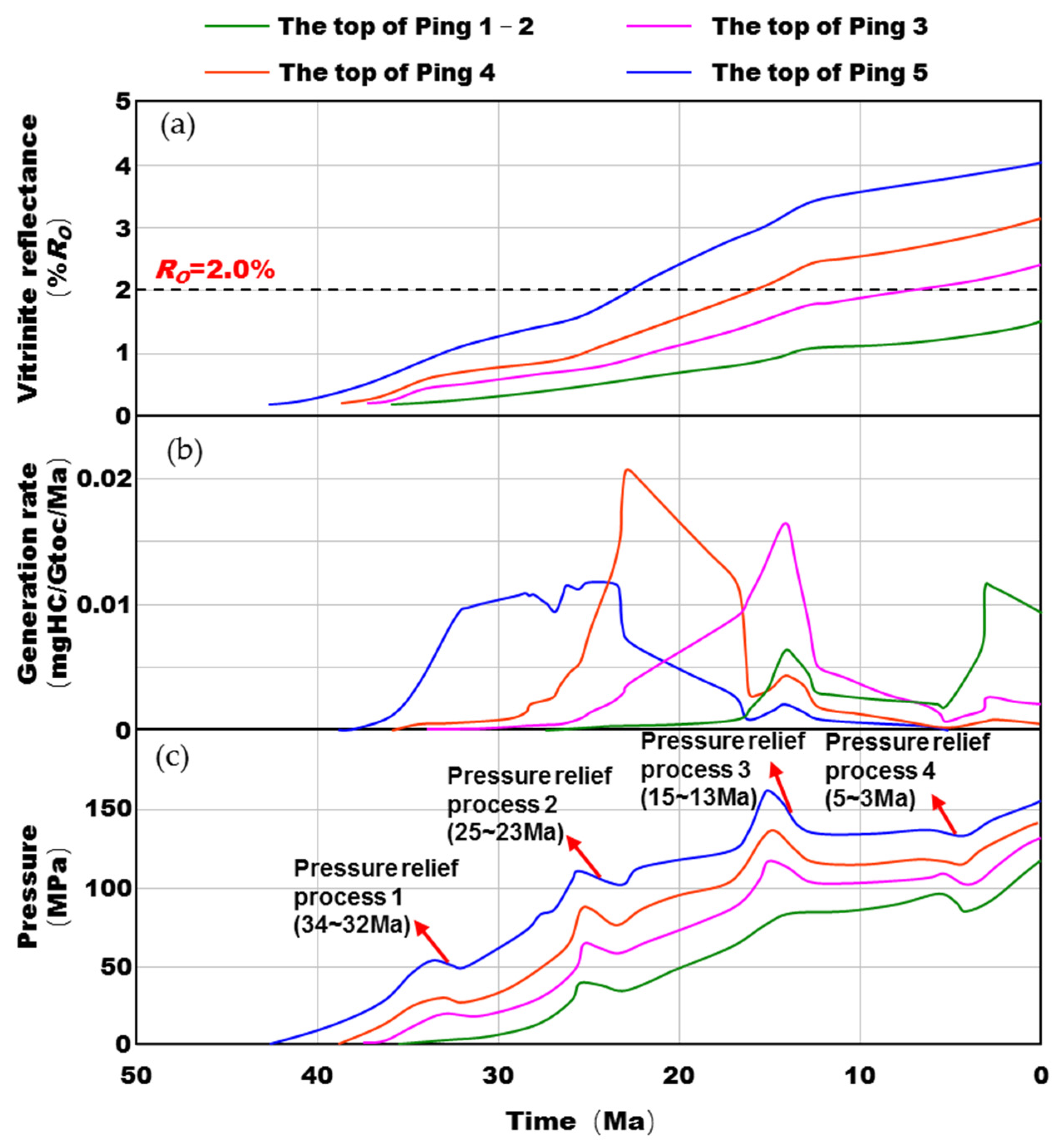
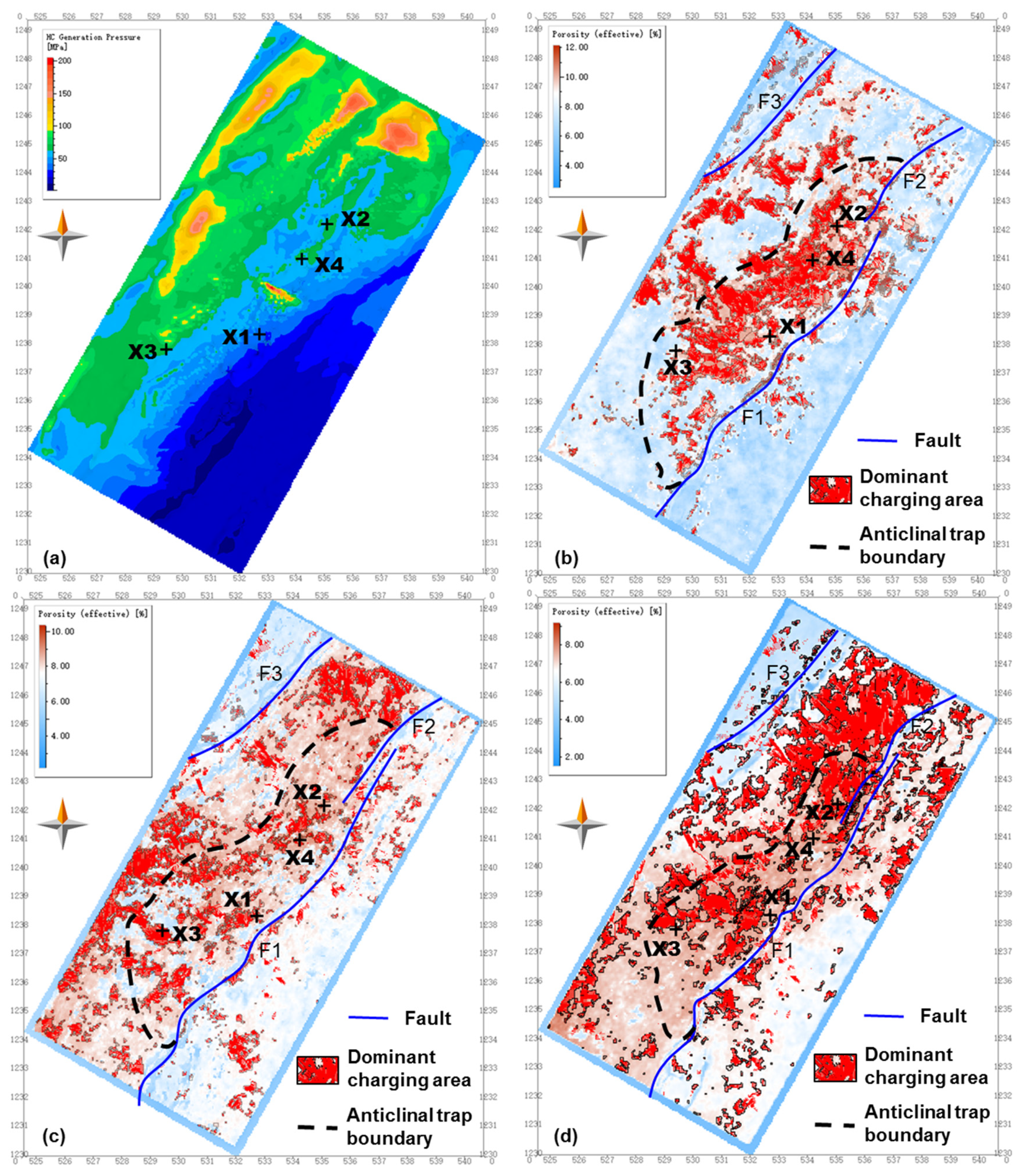
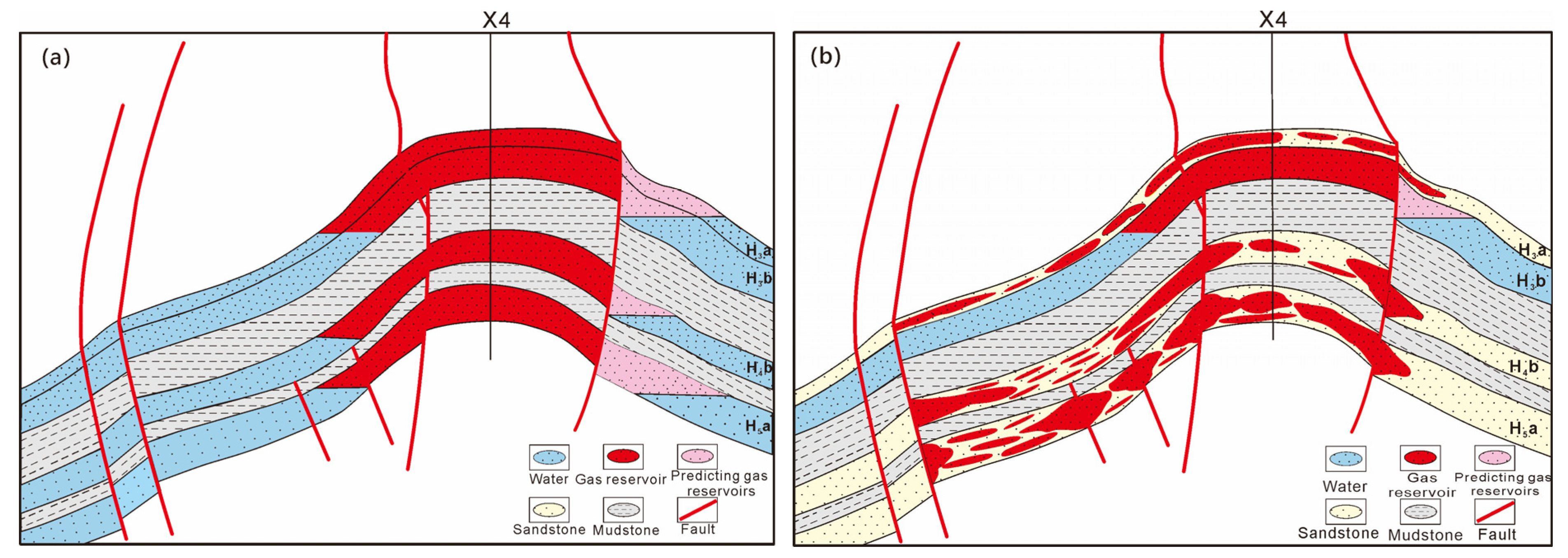
| Formation | Main Lithology | Thermal Conductivity (w/mk) |
|---|---|---|
| Santan Formation + Quaternary System | Sandstone and mudstone | 1.365 |
| Liulang Formation | Sandstone and mudstone | 1.841 |
| Longjing Formation + Yuquan Formation | Sandstone and mudstone | 1.910 |
| Huagang Formation | Sandstone, siltstone and mudstone | 2.468 |
| Pinghu Formation | Sandstone, siltstone and mudstone | 2.636 |
| Paleocene + Middle-Lower Eocene | Sandstone, siltstone and mudstone | 1.357 |
| Horizon | Trap Area (km2) | Buried Depth of High Point | Lowest Trap Line | Closure Height | ||||||||||
|---|---|---|---|---|---|---|---|---|---|---|---|---|---|---|
| Time (ms) | Depth (m) | Time (ms) | Depth (m) | Time (ms) | Depth (m) | |||||||||
| West Block | East Block | West Block | East Block | West Block | East Block | West Block | East Block | West Block | East Block | West Block | East Block | West Block | East Block | |
| H3a | 43.49 | 2665 | 3515 | 2785 | 3770 | 120 | 255 | |||||||
| H3b | 42.65 | 2705 | 3575 | 2815 | 3807 | 110 | 232 | |||||||
| H4b | 41.35 | 15.10 | 2815 | 2910 | 3870 | 4090 | 2945 | |||||||
| H5a | 37.48 | 15.50 | 2920 | 3010 | 4105 | 4310 | 3045 | 3030 | 4150 | 4350 | 130 | 120 | 280 | 260 |
Disclaimer/Publisher’s Note: The statements, opinions and data contained in all publications are solely those of the individual author(s) and contributor(s) and not of MDPI and/or the editor(s). MDPI and/or the editor(s) disclaim responsibility for any injury to people or property resulting from any ideas, methods, instructions or products referred to in the content. |
© 2023 by the authors. Licensee MDPI, Basel, Switzerland. This article is an open access article distributed under the terms and conditions of the Creative Commons Attribution (CC BY) license (https://creativecommons.org/licenses/by/4.0/).
Share and Cite
He, X.; Li, J.; Duan, D.; Liu, B.; Shang, X.; Li, W.; Xu, Z.; Du, Z.; Xu, C. Driving Forces of Natural Gas Flow and Gas–Water Distribution Patterns in Tight Gas Reservoirs: A Case Study of NX Gas Field in the Offshore Xihu Depression, East China. Energies 2023, 16, 6028. https://doi.org/10.3390/en16166028
He X, Li J, Duan D, Liu B, Shang X, Li W, Xu Z, Du Z, Xu C. Driving Forces of Natural Gas Flow and Gas–Water Distribution Patterns in Tight Gas Reservoirs: A Case Study of NX Gas Field in the Offshore Xihu Depression, East China. Energies. 2023; 16(16):6028. https://doi.org/10.3390/en16166028
Chicago/Turabian StyleHe, Xianke, Jun Li, Dongping Duan, Binbin Liu, Xiaoqing Shang, Wenjun Li, Zeyang Xu, Zhiwei Du, and Chenhang Xu. 2023. "Driving Forces of Natural Gas Flow and Gas–Water Distribution Patterns in Tight Gas Reservoirs: A Case Study of NX Gas Field in the Offshore Xihu Depression, East China" Energies 16, no. 16: 6028. https://doi.org/10.3390/en16166028
APA StyleHe, X., Li, J., Duan, D., Liu, B., Shang, X., Li, W., Xu, Z., Du, Z., & Xu, C. (2023). Driving Forces of Natural Gas Flow and Gas–Water Distribution Patterns in Tight Gas Reservoirs: A Case Study of NX Gas Field in the Offshore Xihu Depression, East China. Energies, 16(16), 6028. https://doi.org/10.3390/en16166028










